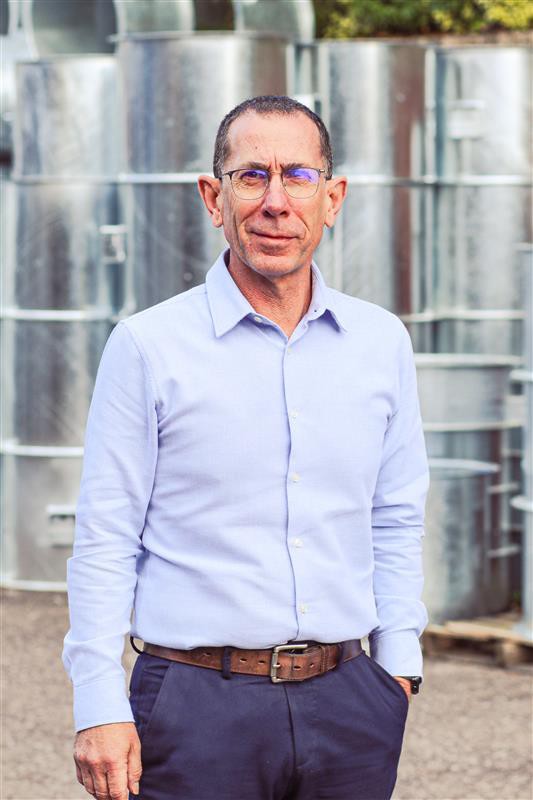Prefab shout

Colin Moss, Car Park and Smoke Control Manager at Elta, discusses the advantages of prefabricated ventilation solutions and their role in transforming the construction industry.
Q: The construction industry has been slow to adopt prefabricated solutions. What is changing now to make them more popular?
A: The industry has traditionally been resistant to change, with established practices becoming ingrained over time. Prefabrication was initially viewed as risky or unproven, as it required breaking from the familiar routine of site assembly.
However, this is changing in part due to increasingly stringent safety and environmental regulations. These demand greater consistency and performance, which prefabricated solutions can guarantee. There is also a growing need to reduce project timelines and avoid disruptions.
Q: How do you think prefabricated solutions will change the construction and ventilation industry in the future?
A: Prefabrication in building services is set to revolutionise the construction and ventilation industries by driving greater site safety, efficiency, reliability and sustainability. As more professionals adopt this approach, we’re likely to see a shift from traditional, fragmented and labour-intensive methods toward more streamlined, integrated processes. This change will foster better collaboration between designers, suppliers and contractors, as prefabricated systems require earlier coordination.
Additionally, as prefabrication becomes more commonplace, it will set new industry standards, raising expectations for quality, consistency and performance. Manufacturers will continue to innovate, offering increasingly customisable and high performance solutions, further advancing the sector’s capabilities.
Q: One of the prefabricated solutions Elta offers is prefabricated smoke fans. What are the benefits when adopting prefabricated solutions in smoke systems?
A: In a single word, compliance. We know that from the early stages of building design, fire safety and mechanical engineers select and adopt various products to operate within their design strategy. With a multitude of manufacturers offering compliant products, the task of achieving a fully compliant system installation is invariably more complicated.
Even with the best of intentions, non-compliance can easily occur. A mismatch or misinstallation of products on site, including fans, ancillaries, mounting systems, controls and acoustic components, can create delays and a rapid escalation of costs at best. Attempting to make minor savings throughout the tender and procurement process can lead to a worst-case scenario of non-compliant systems holding up sign-off and client handover.
This can be mitigated by adopting an Elta prefabricated smoke solution. Ideally included in the early stages of a project, the smoke fans and associated ancillaries are designed and applied selecting only products that technically achieve the desired result. Most importantly, they do so while meeting compliance and remaining cost effective.

Q: What are the main benefits of using prefabricated systems over traditional ones?
A: Prefabricated systems bring significant advantages by simplifying installation and enhancing project outcomes. Site safety and H&S compliance is one of the primary benefits with a reduction in risk, as components are factory pre-assembled. Prefabricated solutions are engineered and rigorously tested to ensure compatibility and compliance before reaching the site.
These solutions also save time, as they arrive ready to install, which significantly reduces the need for on-site labour and accelerates project timelines. Additionally, prefabrication enables more streamlined design processes, such as selection software that facilitates early-stage design optimisation by providing detailed acoustic and airflow performance data, allowing for precise planning and efficient implementation.
Q: Do prefabricated solutions impact compliance or safety standards? In what ways?
A: Prefabricated solutions are designed to meet or exceed compliance and safety standards. For smoke ventilation, EN12101-3 is critical — it defines performance, material and testing requirements to ensure reliability in emergencies.
By using prefabricated systems, engineers avoid common compliance pitfalls associated with on-site assembly errors. Prefabrication also aligns with modern environmental and safety standards, helping to future-proof projects against evolving regulations.
Q: What advice would you give to project managers or engineers who are unsure about using prefabricated systems? Where should they start?
A: For those hesitant about adopting prefabricated solutions, my advice would be to begin by identifying a reliable supplier with a proven track record. Look for key factors like ISO 9001 certification, which ensures robust quality management, and a range of customisable options that can meet the unique needs of your project.
Support tools, including selection software, can simplify decision-making by providing performance metrics up front, helping make informed choices. It’s also helpful to start small, maybe with a specific system or on a smaller project, to gain confidence in how prefabricated solutions can deliver tangible benefits before scaling up to larger applications.







